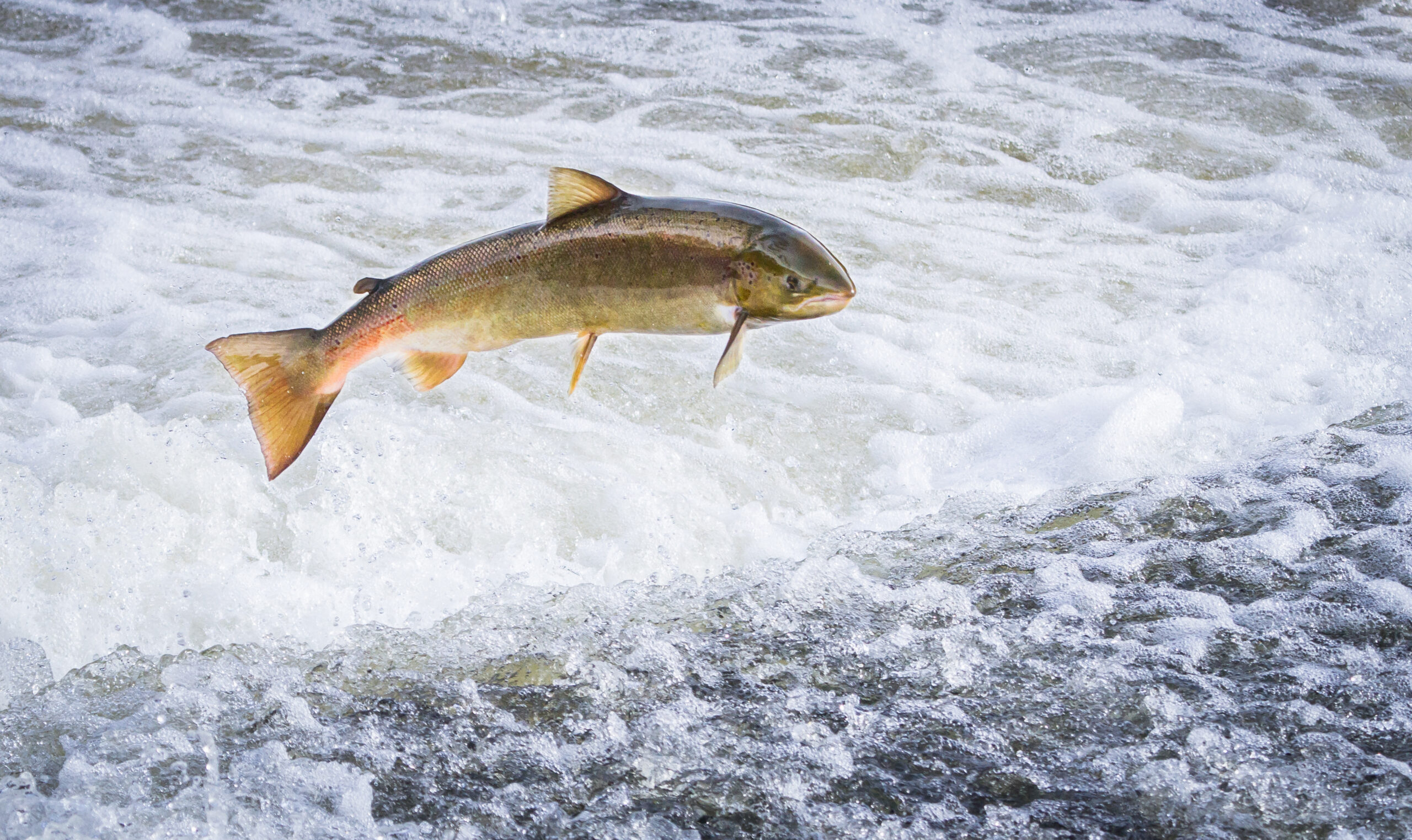Atlantic salmon stocks in England have reached new lows according to a new report (Monday 7 October).
Below minimum levels
According to the Atlantic Salmon Stock Assessment for 2024 from the Environment Agency (EA) and the Centre for Environment, Fisheries and Aquaculture Science (Cefas), 90% of principal salmon rivers in England are classified as either “at risk” or “probably at risk,” meaning salmon numbers are below minimum levels to support sustainable populations. The salmon stocks and fisheries in England and Wales reports have been produced since 1997.
Atlantic salmon is an indicator species, reflecting the health and cleanliness of marine and freshwater ecosystems. A shrinking salmon population, the EA stresses, is a warning sign that much more work is needed to improve our natural environment.
The dramatic decline of salmon stocks is an international trend, with similar findings reported in Ireland, Iceland, Sweden and Canada, however the UK shows the most significant decline.
Other findings
The latest Atlantic Salmon Stock Assessment for 2023 shows England’s Atlantic salmon stocks are lower than 2022 levels in 4 out of 42 rivers, indicating a continuing decline. The assessment also shows that 84% of the principal salmon rivers in England are now classified as ‘at risk’ for salmon, the highest level since records began. In addition, 6 rivers are ‘probably at risk’, 3 ‘probably not at risk’ with 1 ‘not at risk’. These categories refer to a river’s probability of achieving the management objective – namely to meet or exceed the minimum stock Conservation Limit that describes the required egg deposition levels in at least 4 years out of 5, on average.
Egg deposition levels in 2023 were estimated to be above the Conservation Limit (CL) in 5 out of the 64 Principal Salmon Rivers in England and Wales (8%), which is the lowest since 1993. Rivers where egg deposition levels were below the CL were widely distributed across England and Wales.
Recent improvements
Last year, the EA completed the largest fish pass in the UK, at Colwick near Nottingham, establishing a new route for migrating wild fish to reach the River Trent catchment. The Trent has observed an increasing number of salmon as overall water quality has improved following decades of decline following industrialisation.
Simularly, fish passage improvement on the River Severn, facilitated by the ‘Unlocking the Severn’ project, a collaboration between EA, NE and others significantly improved a number of weirs known to block salmon migration routes. These improvements have helped to ensure that salmon and other migratory fish can now ascend the river more easily to reach their spawning grounds.
Causes for the habitat degradation are attributed to agricultural pollution, sedimentation, and chemical runoff from industries, wastewater, and roads. As well as barriers to migration, water scarcity from abstraction and the persistent challenge from climate change and warming seas.
Investigating the causes of the decline in wild salmon populations is actively ongoing through NASCO (the North Atlantic Salmon Conservation Organisation, an international organisation of which the EA is part of the UK delegation headed by Defra) and the Missing Salmon Alliance through the Likely Suspects Framework (LSF) initiative. These work programmes are considering the limiting factors both within freshwater, transitional waters and the marine environment.
Alan Lovell, Chair of the Environment Agency said: “Forty years ago an estimated 1.4 million salmon returned to UK rivers each year. We are now at barely a third of that – a new low and evidence of the wider, growing biodiversity crisis. The EA is already taking action to tackle water pollution, address barriers to migration and restore and improve habitats. We need all those who pollute to clean up their act. We will continue to press on and improve our regulation of water quality and that is why I am pleased by the benefits the new Special Measures Bill brings, which will improve the EA’s ability to hold polluters to account.
Report: Assessment of Salmon Stocks and Fisheries, England and Wales 2023
